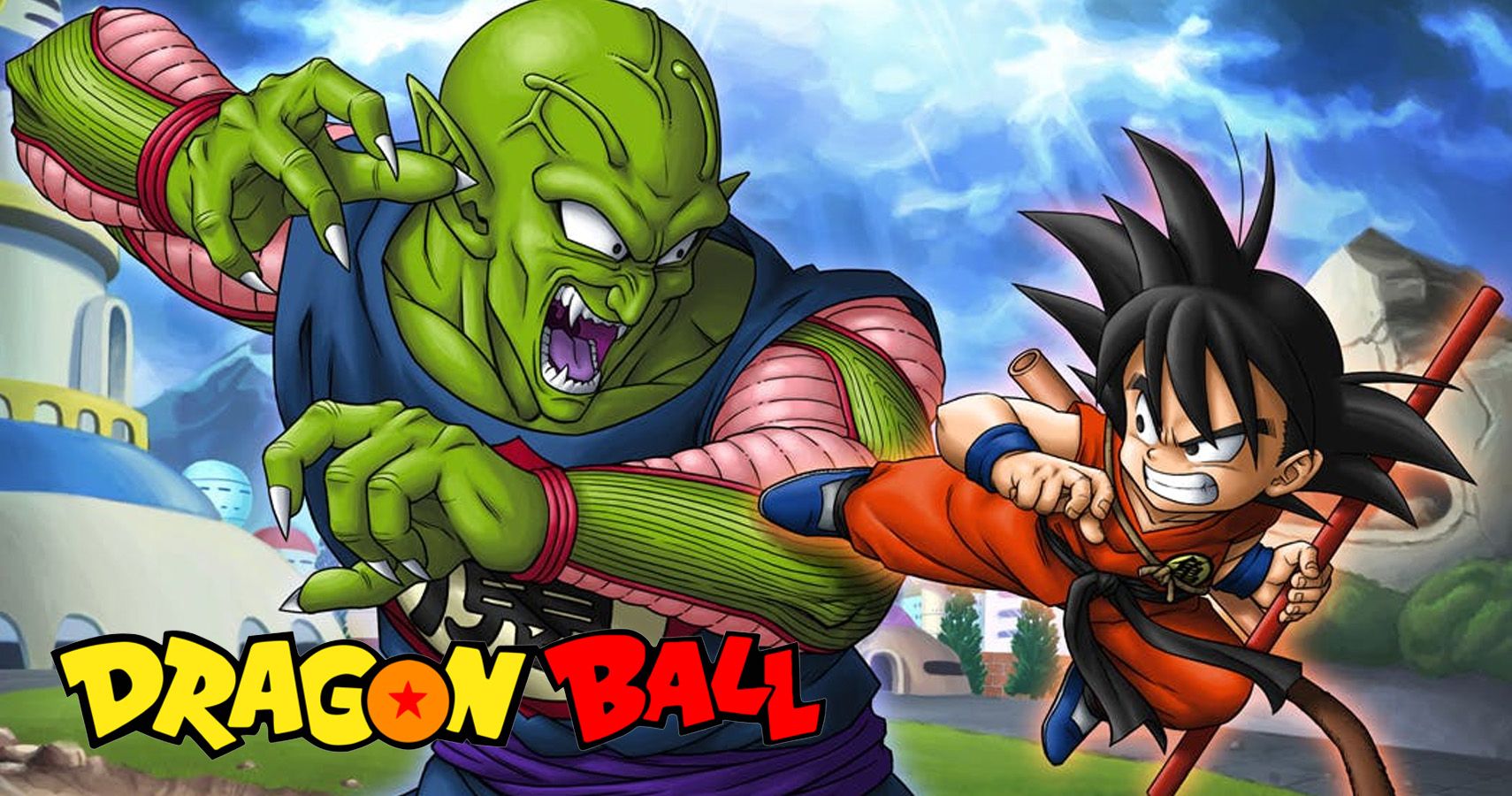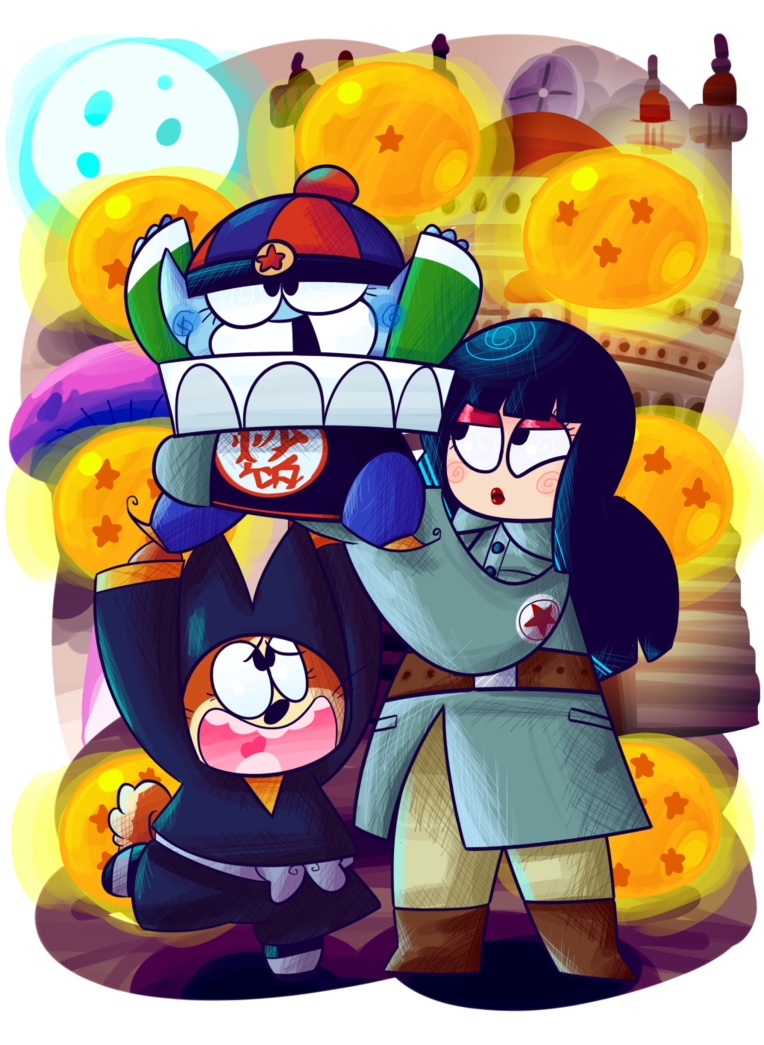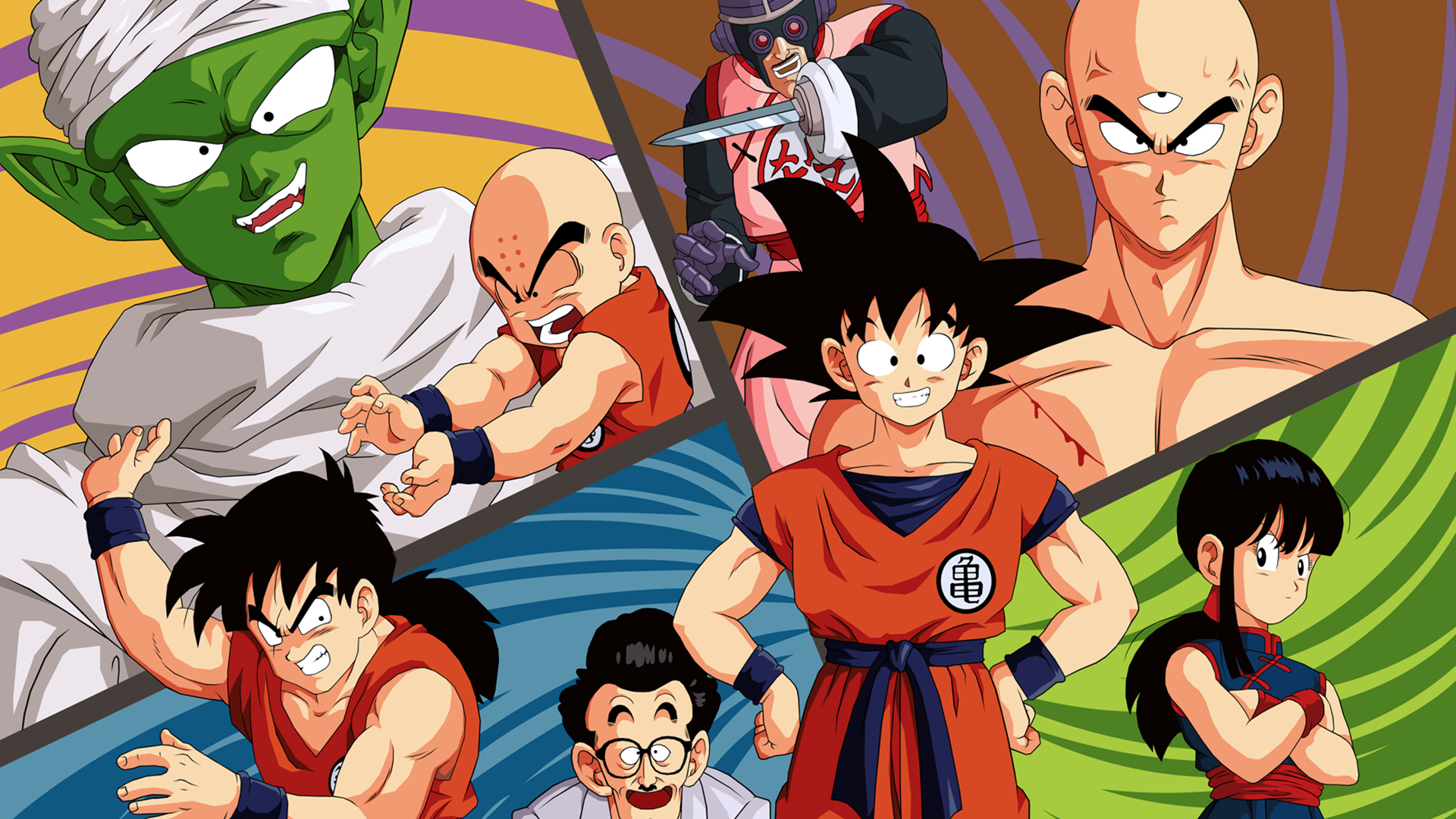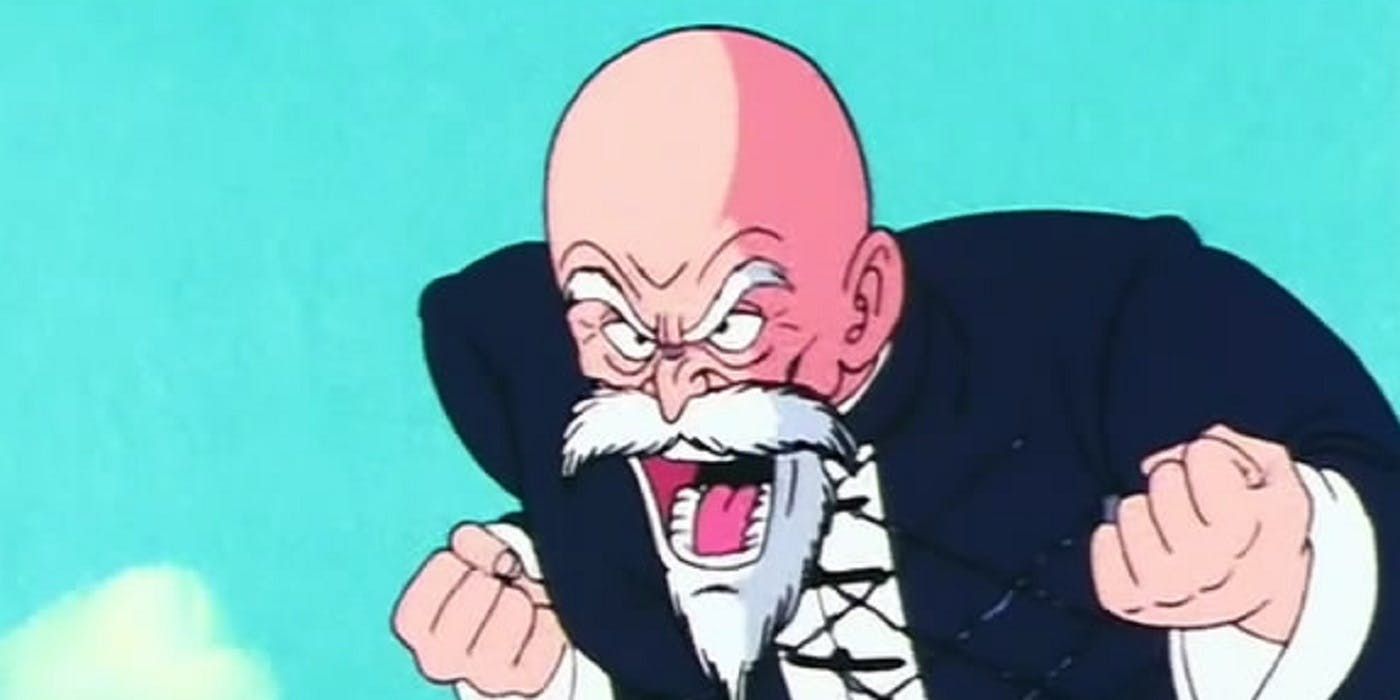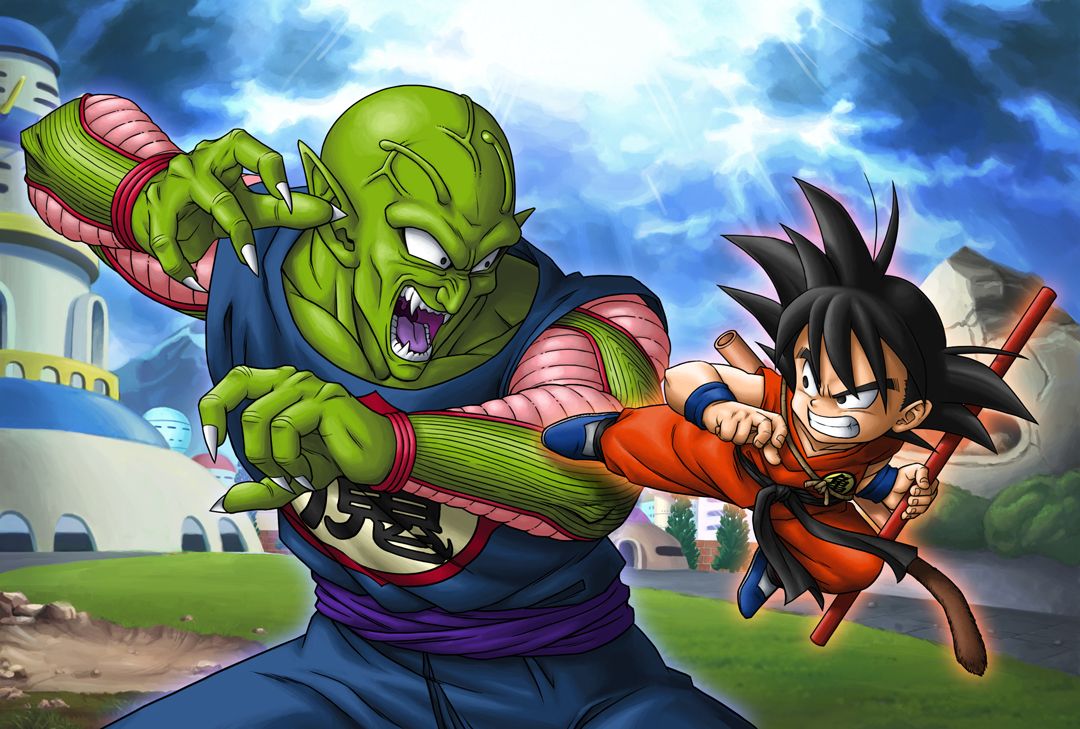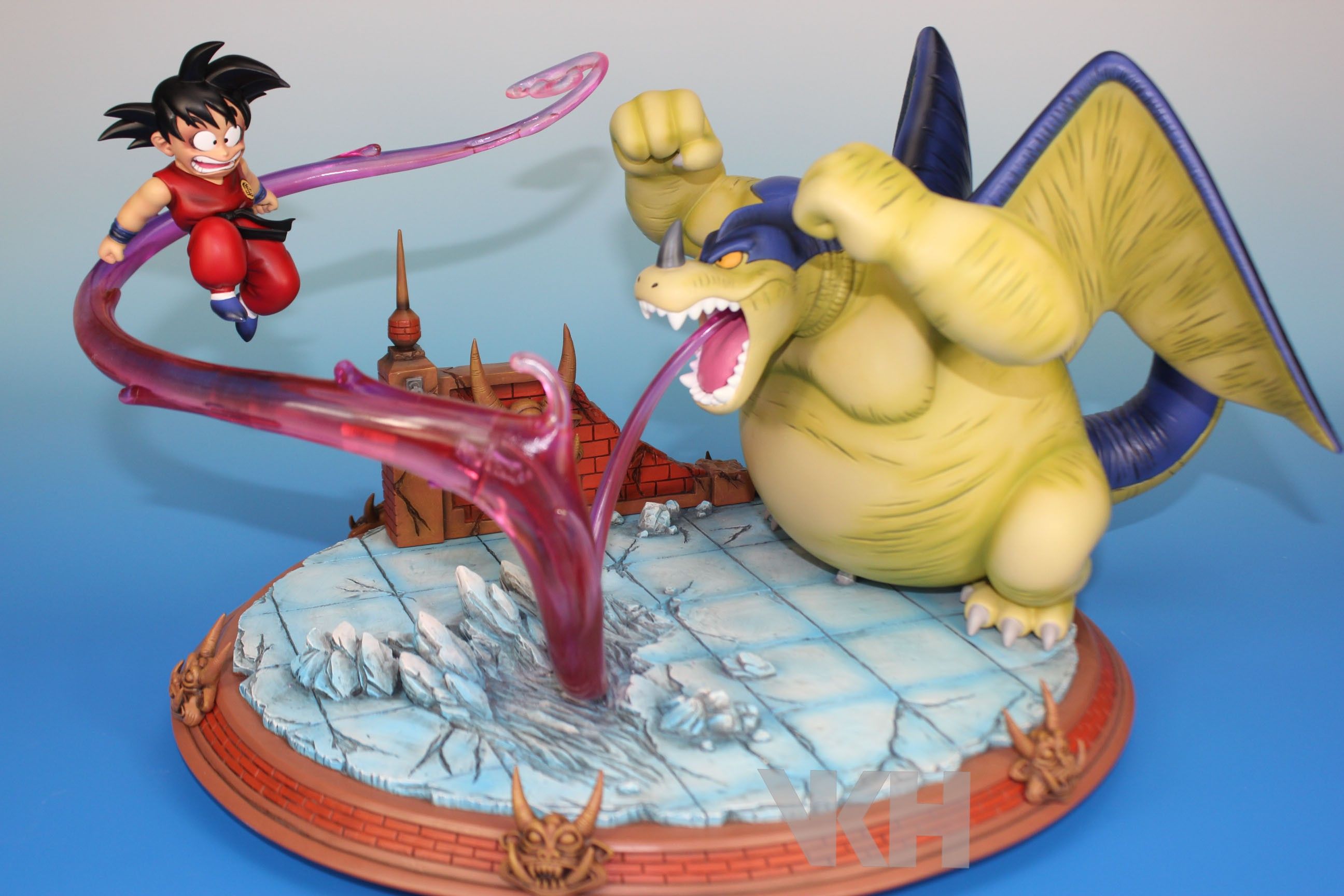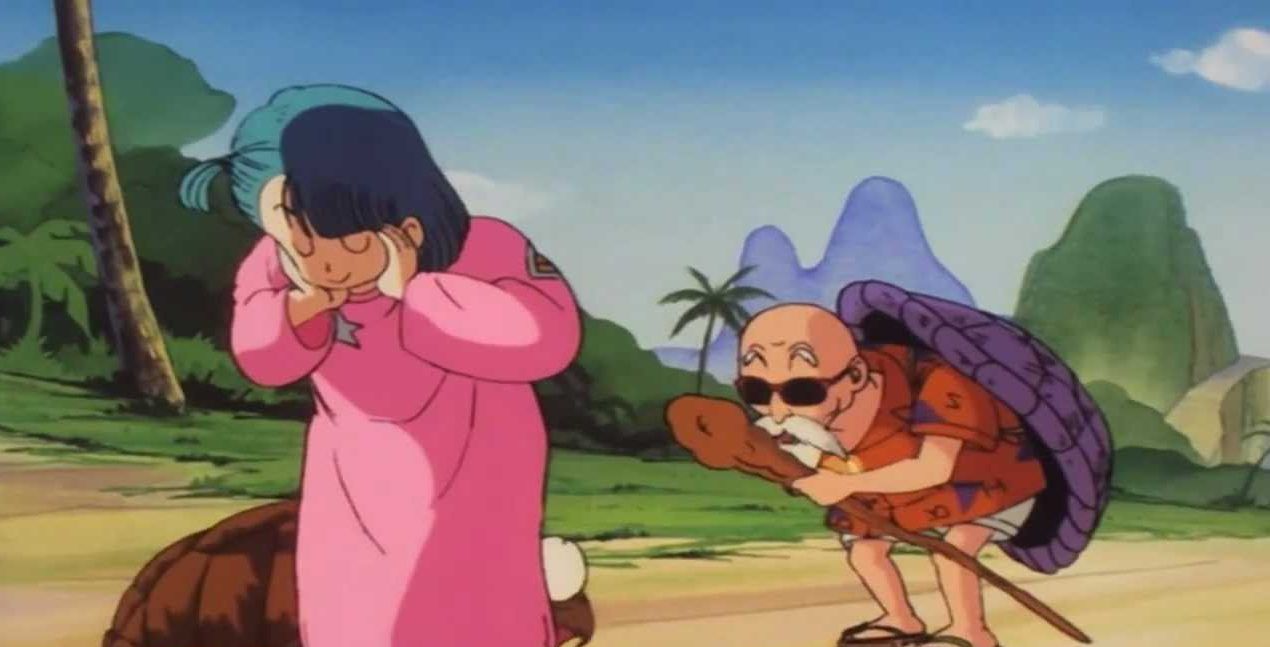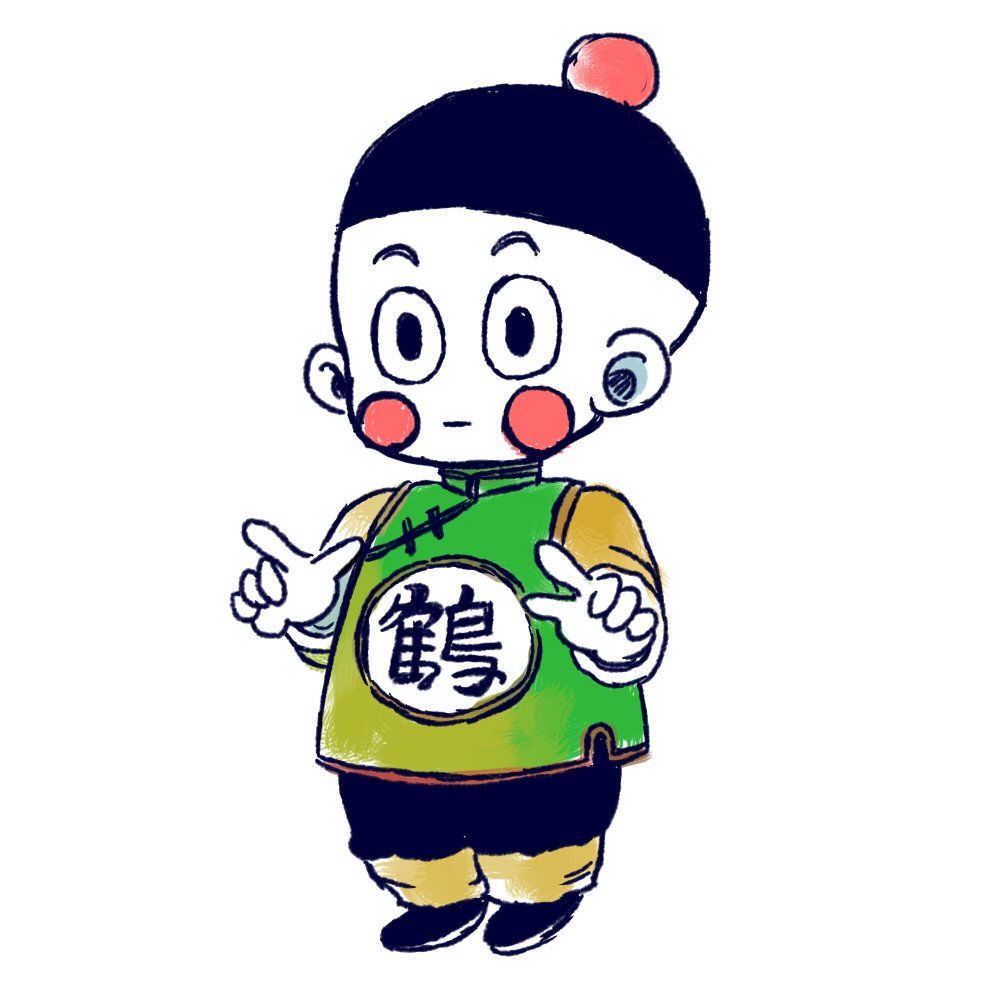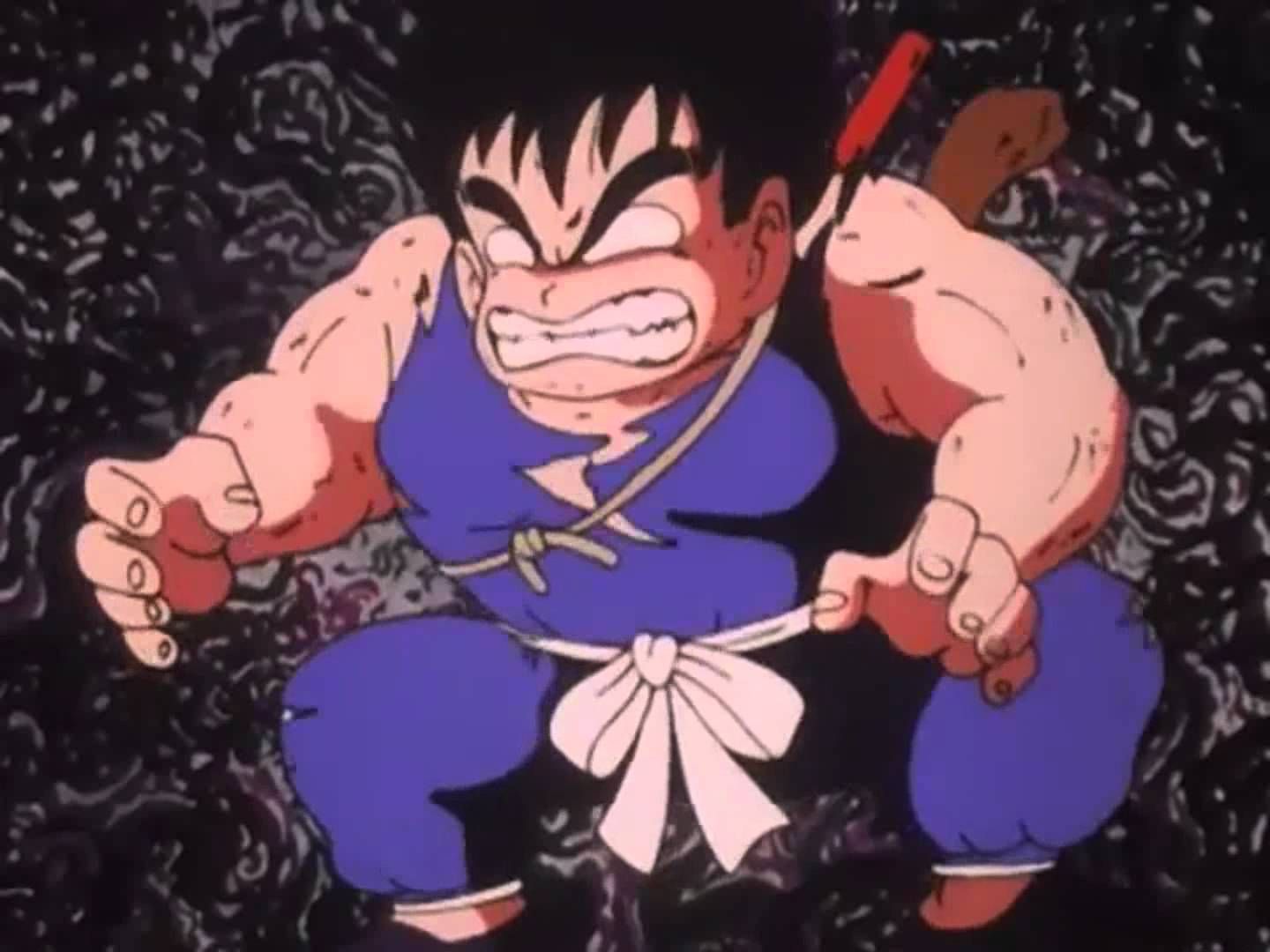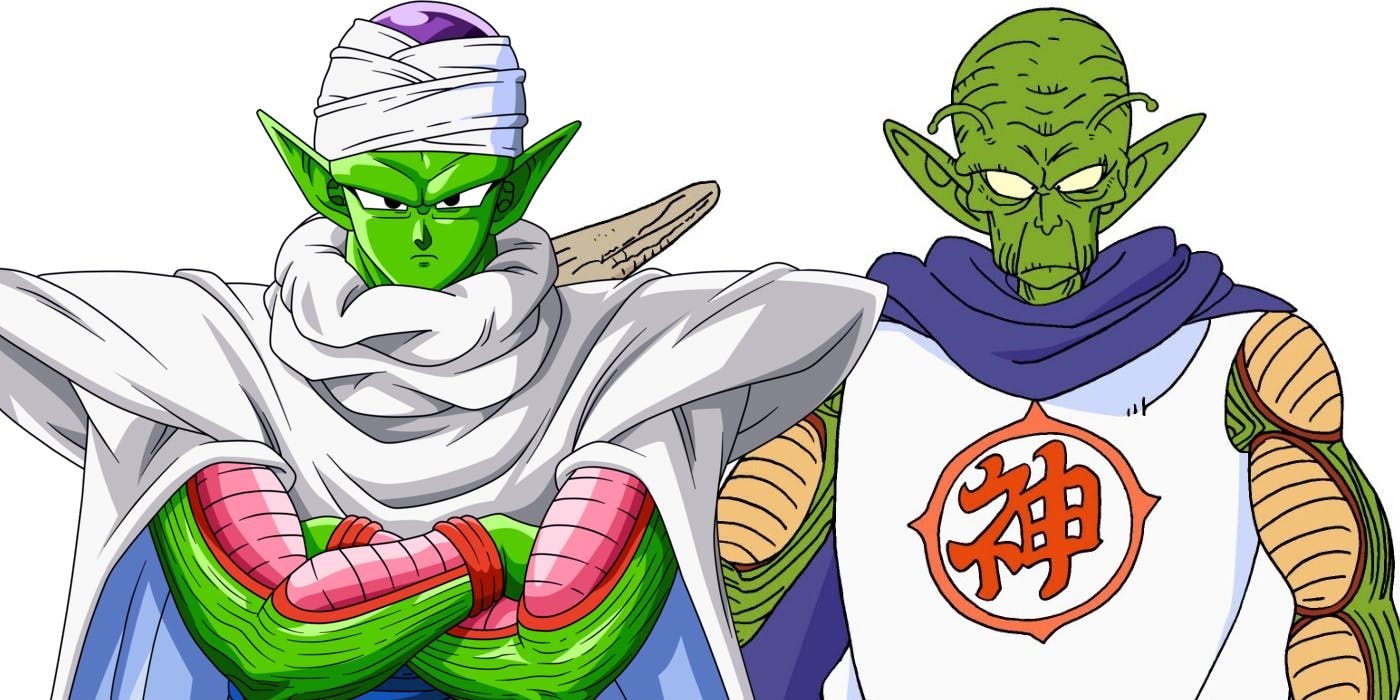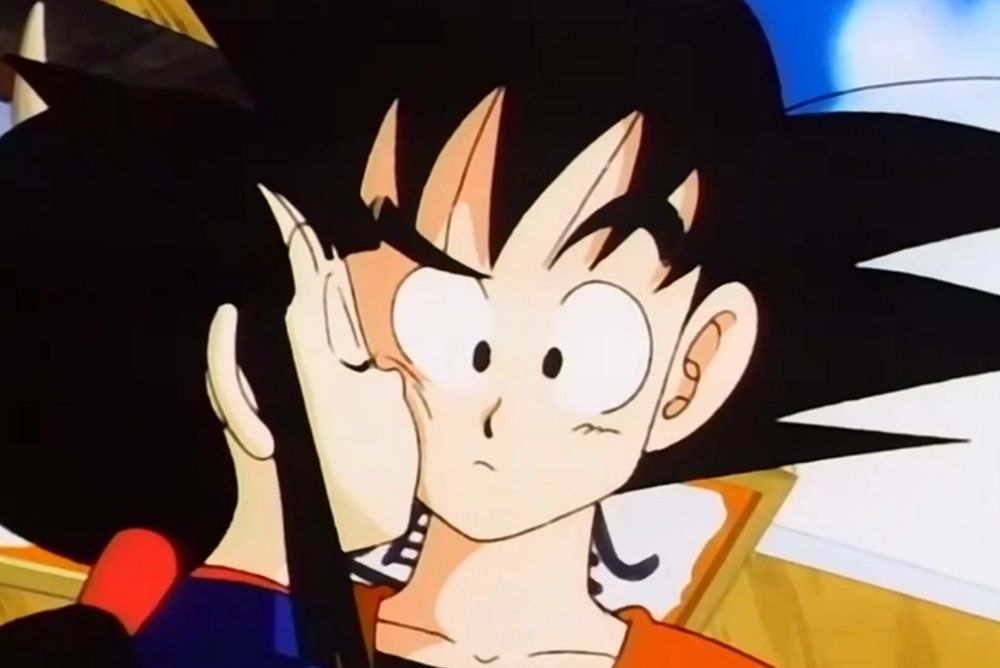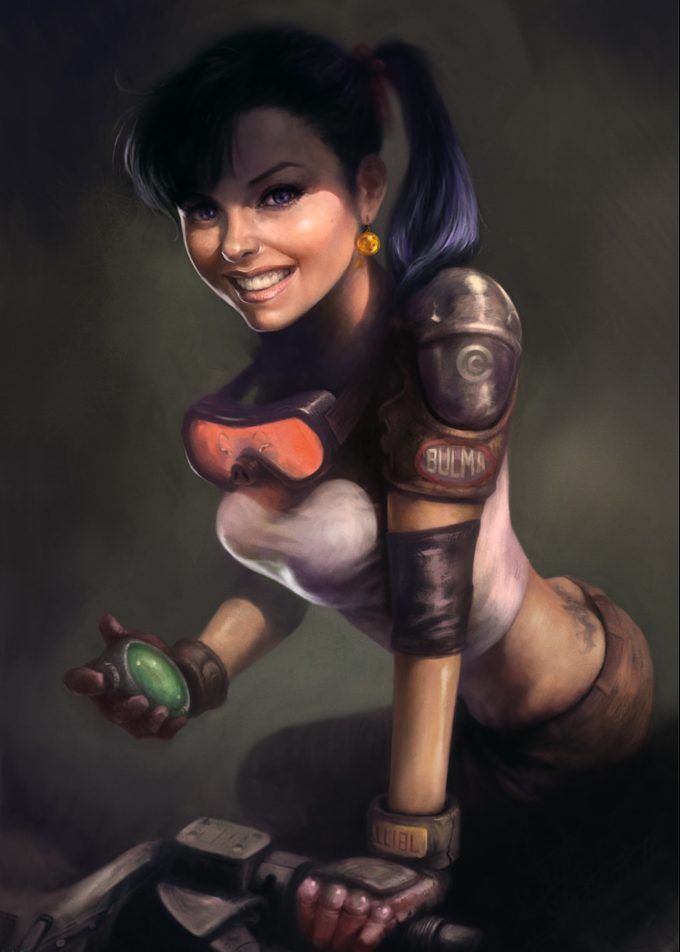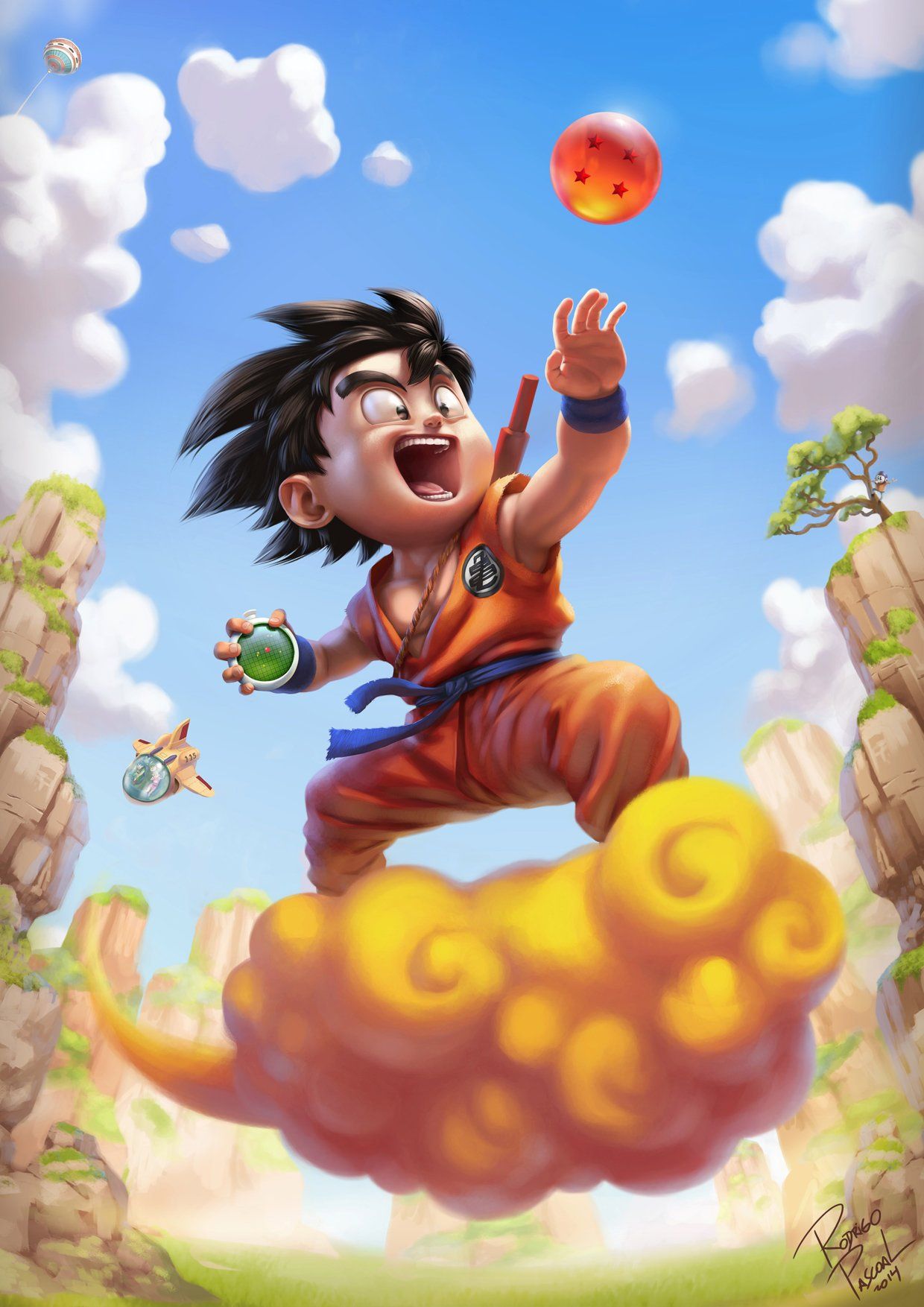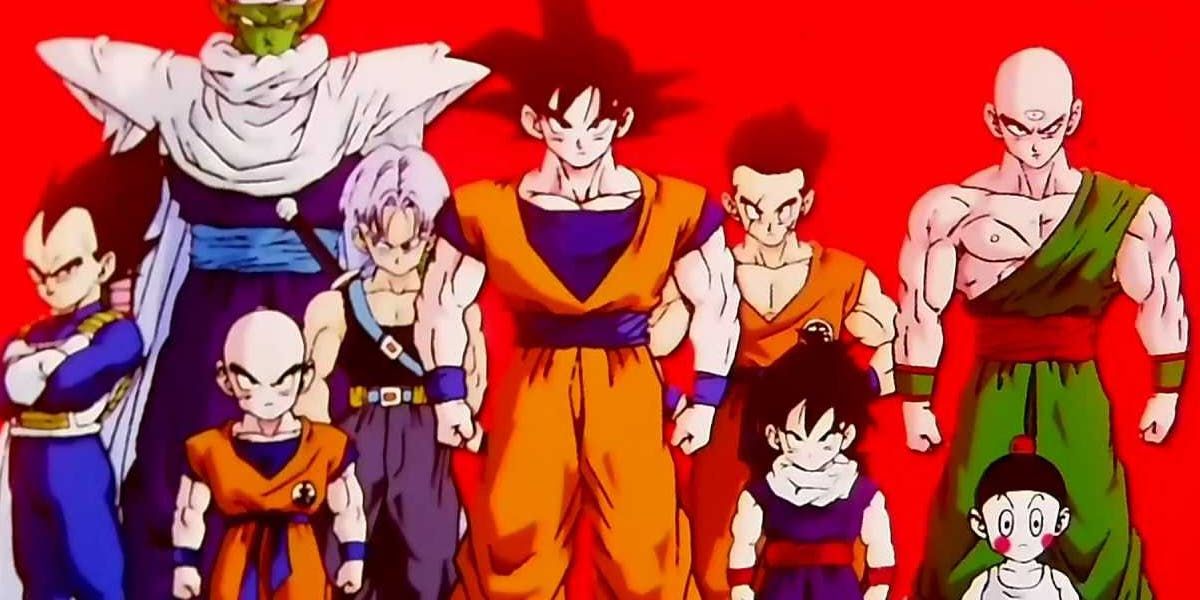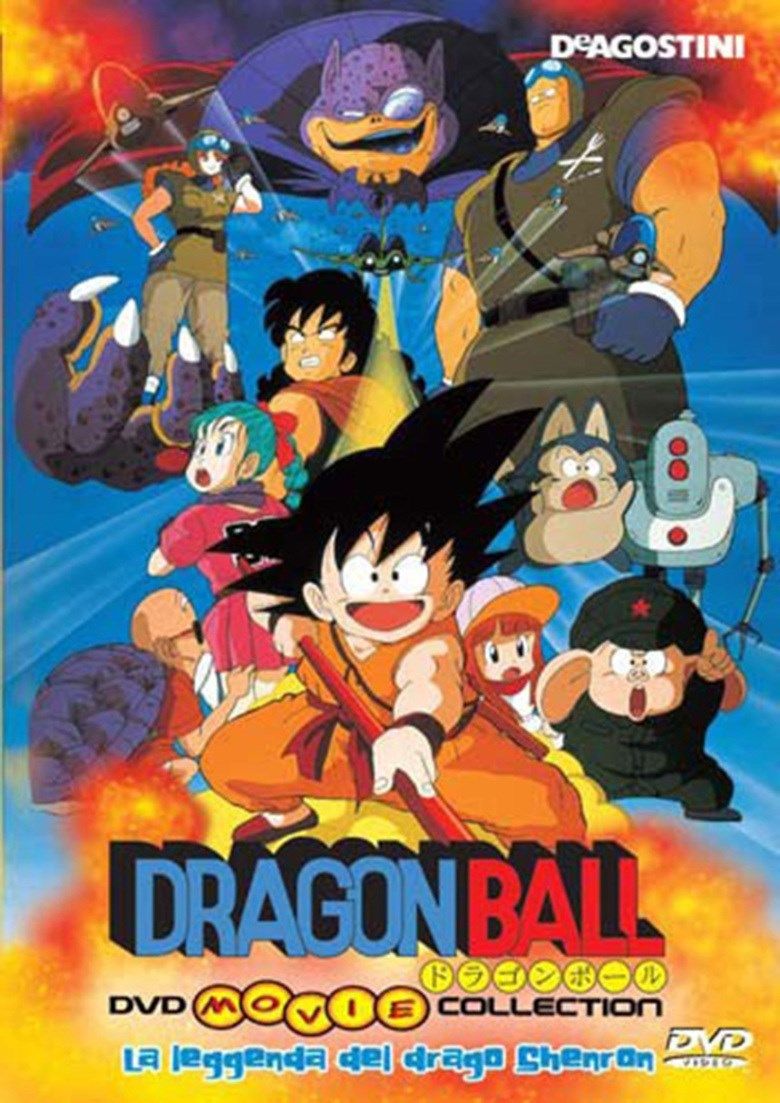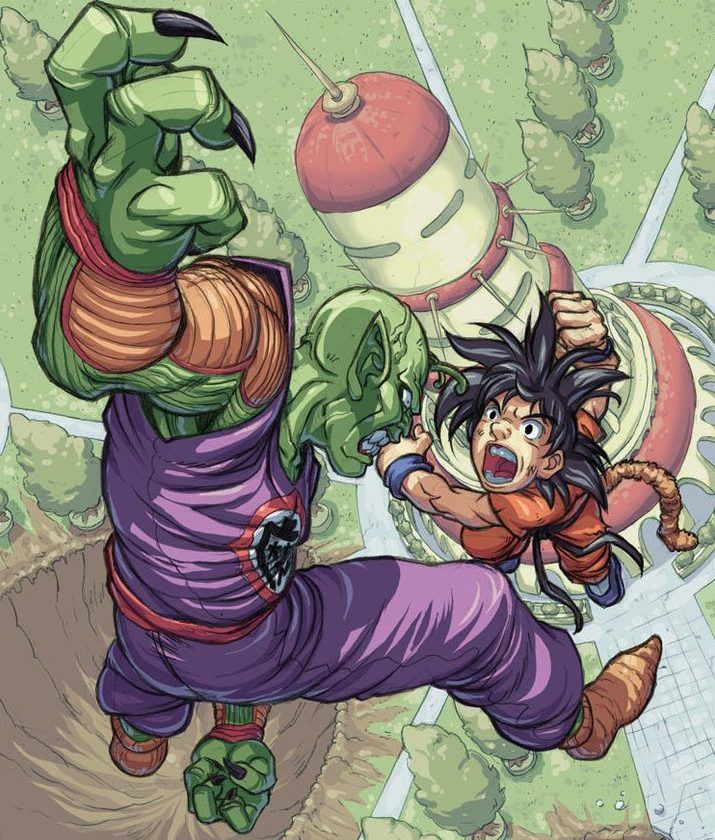Before anyone rocked the dragon, got a power, or limit broke x survivored (whatever that means,) Goku had to find that Dragon Ball, and he couldn’t stop until he found them all. We’re talking about Dragon Ball, that early chunk of the series where Goku is a child, everyone is quietly stationed on Earth, and the biggest threat is an old green man who just wants to blow up a few cities. It’s an entirely different world when you compare it to the latter portion of the series. Z is so grounded in sci-fi that it’s easy to forget the whole story began as a Chinese inspired fantasy.
With thirty years to reflect on the original series, it’s gotten almost difficult to read or watch Dragon Ball in its original context. Z is just a towering presence that it’ll surely enter anybody’s mind during the process. Just as importantly, it’s gotten harder to pick up on the smaller details; the secrets hiding in plain sight and, boy, does Dragon Ball have some juicy ones.
So whether you read it in its original form, or watched it as a kid growing up — it's time to unpack the darkest most hidden secrets about Akira Toriyama's infamous original series.
15 Toriyama Was Going To End The Series With Pilaf
Any discussion about the end of Dragon Ball will surely involve someone mentioning how Akira Toriyama wanted to end the series with either Freeza or Cell. While these statements may seem true thanks to the bombastic and grand natures of those arcs’ endings, they’re total rubbish. Toriyama never intended to end the series with either of those sagas. Instead, he planned to end it with Pilaf.
It’s hard to believe, but Toriyama originally only wanted to write one arc that ended with the big wish with the Dragon Balls. By the time he got to that point, however, the series had been gaining popularity and he agreed to keep it going for just a bit longer. Of course, that “just a bit longer” ended up being a decade long epic that changed the landscape of manga and anime forever.
14 Dragon Ball Z Actually Started With The 23rd Budokai
There is no Dragon Ball Z, not really. What most people know as DBZ is just the last four arcs of Dragon Ball, a 42 volume manga that never had its name changed. The switch to DBZ was a change exclusively for the anime. It makes sense considering the Saiyan saga is such a big shift in tone from what came before it but, while that makes sense, it isn’t actually true. DBZ as fans know it began earlier, with the start of the 23rd Budokai.
The last arc of the original Dragon Ball anime saw a shuffling of sorts in regards to series directors and higher ups. As a result, the 23rd Budokai feels far more in-line with DBZ than Dragon Ball despite still being part of the original anime. It’s here where the Z anime staples actually started; spending episodes charging attacks, dragging out manga pages as much as possible, and pumping up the violence began here. DBZ marked a formal change, but the Z wheels had already been on for some time.
13 Roshi Could Have Solved Every Problem In The Series Had He Trained Harder
Yeah, Super Saiyan Blue is neat and Golden Freeza is a slick design, but you know what the biggest takeaway from Resurrection F really is? Master Roshi is stupidly strong. This creepy geezer went from being weaker than King Piccolo to being strong enough to take on dozens of Freeza Force members while barely breaking a sweat. Toriyama even stated that Roshi would be roughly strong enough to take on Nappa fully trained. While that isn’t particularly impressive so late in the franchise, it does mean he’d be able to win the 22nd Budokai, defeat King Piccolo, defeat Piccolo and win the 23rd Budokai, defeat Raditz, and defeat Nappa. He’d reach his roadblock with Vegeta, but that’s still an impressive track record for a character who previously had written himself off in favor of the next generation.
12 Toriyama’s Editor Was Not Satisfied With The Tone Of The Anime
Dragon Ball didn’t end so Dragon Ball Z could start because the anime team felt the series needed new branding because of the tonal shift from fantasy to science fiction; Dragon Ball ended so Dragon Ball Z could start because Toriyama’s editor at the time, Kazuhiko Torishima, felt Dragon Ball was not living up to the foundation the manga set. Specifically, it was the King Piccolo arc that convinced Torishima a change needed to take place.
While most fans, rightfully, look back on the King Piccolo arc as the moment Dragon Ball got serious, Torishima saw the anime’s adaptation as a total disappointing citing issue with the tone of arc and the lack of drama. This distaste led to him forcing a shuffling within the anime staff leading to the men who would end up running Z finishing up Dragon Ball with the 23rd Budokai.
11 Goku Should Have Been Disqualified During The 21st Budokai
While Goku does ultimately end up losing the 21st Budokai during his match against Jackie Chun, he should have lost during his very first fight. After being tossed out of the ring by Giran, Goku summons Nimbus to him so that he can avoid being rung out. Immediately, the referee steps in and questions the validity of this. While Goku should have been disqualified, the ref ends up letting Goku off the hook for a first time offense. Which is good for Goku, but totally unfair to Giran who fairly won their match. Relying on outside help is completely against the rules and Goku got a free pass for no real reason whatsoever.
10 Goku’s Status As Protagonist Is Questionable
Most people cite Dragon Ball as the series where Goku got most of his development, but that’s not true. He develops far more in Z, it’s just subtle. In fact, Goku isn’t much of a main character in Dragon Ball if you look at it from an arc to arc basis. The Pilaf saga is driven by Bulma, the 21st Budokai develops Roshi more than either Goku or Krillin, and the 22nd Budokai and King Piccolo saga are more about Tien and Roshi than Goku. He’s our main focal point throughout the series, but he rarely acts as the driving force of the plot himself. It isn’t until the 23rd Budokai where Goku really starts to come into his own as a more solidified lead.
9 Chiaotzu Wins Exactly One Fight In The Entire Series
People like to lambast Yamcha for being all around useless for most of the series, but at least he hasn’t lost virtually every fight he’s been in. He’s lost most, granted, but his loss record is nothing compared to Dragon Ball’s resident loser: Chiaotzu. From his introduction to the franchise’s end, everyone’s least favorite Chinese vampire wins exactly one fight, and it’s one that doesn’t even matter– his 22nd Budokai preliminary fights.
These fights are such guaranteed wins that we don’t even see all of them most of the time. Chiaotzu won this fight by default because he needed to be in the tournament to fight Krillin. Worse yet, he actually manages to lose his 23rd Budokai prelim fight against Tao Pai Pai. Now, Tao is a strong opponent, but you have to remember that Chiaotzu used his psychic abilities to fix all the matches. He could have chosen anyone he wanted and he chose the one guy who’d beat him silly.
8 Dragon Ball Was Always Meant To Get Serious
Dragon Ball is a comedy, Dragon Ball Z is a drama. Dragon Ball is light hearted, Dragon Ball Z is serious. These are the most common sentiments you’ll hear when discussing the differences between DB and DBZ. Savvier fans will know that Dragon Ball was plenty serious before Z ever came around, though. Dragon Ball, while initially humorous and playful in tone, was designed to be a more serious manga compared to Toriyama’s previous outing, Dr. Slump.
Granted, it’s not hard to be more serious than the bafflingly wacky Dr. Slump, but even the Pilaf saga has some moments of tension and drama that aren’t present in Toriyama’s previous work. Pilaf actually tries to kill the cast, Yamcha is introduced as a legitimate threat, and Goku’s transformation into an Oozaru is not played for laughs whatsoever. Dragon Ball is funny, but it’s always had its serious moments.
7 Piccolo And Kami Were Already Planned To Be Aliens By The End Of The Series
Despite Toriyama’s notorious reputation for making things up week to week, he did in fact plan a few key details. Even though it totally fits in with the narrative of Toriyama just improvising his way to the finish line, Toriyama decided Piccolo and Kami should be Namekians almost immediately following the King Piccolo saga. While he likely hadn’t thought up the planet Namek or their race names, their alien origins can be seen as early in the 23rd Budokai when they speak in a clearly alien language that feels disconnected from their demonic origin. It’s uncharacteristic for Toriyama to plan something like this so far in advance, but it’s a decision that directly tied into two of the best arcs in the series.
6 Dragon Ball Is Not The First Half
Way too often fans will mention how Dragon Ball is the first half and Dragon Ball Z is the second half, but that just isn’t true. The real halfway point of the series is Vegeta’s fight with Zarbon. Dragon Ball, in its entirety, is just the first third. It’s crazy to think about, isn’t it? So much happens in Dragon Ball, but it really does only take up a third of the overall story.
One of the main reasons this misconception is so prevalent likely stems from the fact that Dragon Ball has six arcs while Z has four. Most people understand that Z’s arcs are longer so that explains why Z is longer, but they fail to realize that DB’s arcs are very short. Out of Dragon Ball’s six arcs, only the Red Ribbon Army saga can be classified as long. The rest are incredibly fast paced and are over fairly quick.
5 Bulma Was Voiced By A Broadway Actress Once
While she didn’t end up voicing Bulma more than once, Broadway actress Leslie Alexander took up the role for the original English dub of Devil’s Princess in Sleeping Castle, the second Dragon Ball film. While it’s not unusual for characters to be voiced by several actors in a dub, it is unusual for them to be voiced by a professionally trained Broadway actress. Tiffany Vollmer and Monica Rial will always be remembered as the English voices for Bulma, but don’t forget that everyone’s favorite blue haired Brief was once voiced by someone who starred alongside Hugh Jackman in a Tony Award winning musical.
4 Toriyama Hated Drawing Goku’s Tail
Ever wonder why Goku lost his tail so often during Dragon Ball? Simple, Toriyama absolutely hated drawing his tail. Despite giving Goku a lot of development involving his tail, going so far as to have him overcoming his weakness, the man simply was not a fan of Goku’s monkey origin. Bizarrely, one of Toriyama’s main complaints about the tail was that it meant Goku had to have a hole cut into all of his pants. When you take that into consideration, it makes sense that Toriyama had all the Saiyans wrap their tails around their waist during the Saiyan saga. To think such an easy solution to a tailed protagonist was years out of reach.
3 Dragon Ball Did Actually Air Before Z In The West
One of the biggest misconceptions in the fandom is that the West got Dragon Ball Z before it got Dragon Ball. While Z was infinitely more popular outside of Japan, Dragon Ball did actually air first. Albeit only for 13 episodes. Covering only the Pilaf saga, these thirteen episodes aired in 1995 between September and December. The dub itself isn’t anything spectacular, but it’s an interesting piece of history. More important than that, however, this means there are people who watched the first saga of Dragon Ball and then immediately jumped back in with the start of the Saiyan Saga when Z came out a few years later. Starting with Z is messy enough as is, but jumping from Pilaf to Raditz is as jarring as it gets.
2 The Films Had Their Own Alternate Continuity
Before Dragon Ball Z came around and decided that all the series’ films should exist in their own continuity, Dragon Ball tried its hands at a third adaptation of the story through its movies. With the exception of The Path to Power, all the films act as a retelling of the main story. Curse of the Blood Rubies covers the Pilaf saga with some very minor Red Ribbon elements, Sleeping Princess in Devil’s Castle covers Goku and Krillin’s training with Roshi, and Mystical Adventure caps off the trilogy with its interpretation of the 22nd Budokai and the back half of the Red Ribbon Army arc.
You’ve probably noticed, but those films don’t get very far. Since only one was made per year, and they covered so little material, the adaptation ended up coming to a close before any Piccolo material was covered. It makes sense if you look at the dates. Mystical Adventure came out in 1988 which was when the anime was closing out the King Piccolo saga and the manga was reaching the end of the 23rd Budokai. The movies were a nice idea, but they just couldn’t keep up.
1 Goku Is Actually Pretty Weak
All things considered, Goku isn’t that strong. Naturally, at least. He’s able to close the gap between him and everyone else by training hard, training smart, and being a fast learner, but most of the cast is able to keep up with him fairly easily during Dragon Ball. Goku has the advantage of being a Saiyan, but Krillin, Yamcha, Tien, and Roshi are all able to match his strength in just about every arc. It isn’t until the 23rd Budokai that Goku eclipses his friends in terms of strength. That said, when they do the exact same training Goku did with Kami, their gains are far better. It’s a trend that lasts the whole series. Goku sets a trend and his friends improve on it. It definitely sells Goku short, but the mere fact Goku is such a trendsetter is the reason he ends up as powerful as he is. He isn’t naturally gifted, but that makes his growth all the more impactful.

